Cal Newport's Blog, page 19
May 14, 2020
The Deep Reset

After ten years of waging war against the Trojans, Odysseus, king of Ithaca, set out on the wine-dark sea to begin his journey home. Storms thwarted an easy return voyage, and Odysseus found himself facing many additional years of tragedy and adventure, reaching a mythical nadir when he’s forced to descend into the underworld itself.
Broken down and exposed, Odysseus resists collapse. He instead pulls himself out of Hades, and persevering through additional trials, finally makes it home to his island kingdom, only to find both his family and throne threatened by a conniving horde of suiters. He fights them off.
But he’s not done. Following a prophecy delivered to him by the ghost of Theban Teiresias in the underworld (depicted above), Odysseus makes a humbling journey inland. He carries an oar — a symbol of the maritime world where he reined — farther and farther from the sea, until he arrives at a place where it’s mistaken for a farming implement by locals who have “never heard of crimson-painted ships, or the well-shaped oars that serve as wings.”
It is here, stripped of any of the recognitions on which he’d built his previous life, that he plants the oar in the ground and performs sacrifices to Poseidon, before returning home to live out his life in peace.
“The story of Odysseus is a classic transrational myth,” writes Richard Rohr in his underground classic, Falling Upward, “one that many would say sets the bar and direction for all later Western storytelling.” And for good reason. It’s one of the earliest extant works to describe a pattern absolutely fundamental to the human condition: hardship unlocking a deeper, more authentic, more satisfying life.
As Roher elaborates, Odysseus’s journey is a metaphor for the proper human response to unexpected difficulty. His first response, after arriving broken in the underworld, is survival and progress. He makes his way out of Hades, perseveres through the trials that follow, and then once home, performs the work needed to get his life back in order.
But then — and this is the key to the entire myth — he humbles himself on an inland journey, where he ritually moves beyond the easy comforts of his old life, laying the foundation on which to build something more meaningful.
Once it’s brought to our attention, this pattern becomes visible everywhere. We see it in the travails of Dante, and Augustine, and even Luke Skywalker. Carl Jung argued that this storyline is an archetype, engraved in the collective human unconscious, as unavoidably fundamental as our intuitive repulsion to snakes or attraction to courage. Whether its origin is divine or evolutionary, it represents revelation all the same.
Which brings us to our current moment.
To varying degrees of severity, we’re all suffering through some version of Odysseus’s tragic journey. Many — too many — are struggling with devastating consequences to their health or livelihoods. Like Odysseus surviving the storm that destroyed his fleet, for them, all energy is dedicated to perseverance in the moment.
But for many others, including a large part of my audience here, the moment has brought severe dislocation to much of what we’ve come to trust and expect, but falls short of immediate peril. The question then is what those who find themselves in this situation — marooned on a Netflix-themed island of the lotus eaters — should do about it.
We can shake our fists at the Gods, as some are now acting out through increasingly furious and tragically futile battles fought on social media.
We can cower, marinating in dread, as some are now doing as they glue themselves to catastrophic news coverage, giving in to genuflections of despair.
Or, like Odysseus, we can allow the disruption — painful as it is — spark the resolve needed to find our way out of the underworld, fight to get our affairs back in order, and then, when the time comes, with a mix of humility and purpose: transform our lives into something deeper.
Essentially all of philosophy, theology, literature and history implies that the Odysseus approach is the one for which we as humans are wired. The best response to deep disruption, in other words, is often a deep reset.
This idea, that we should allow our current dislocation to instigate a move toward the deep life, is one that I’ve been implicitly exploring in recent posts (e.g., 1, 2, 3, 4, 5, 6, 7, 8, 9, 10, 11). I thought it was useful, however, to give this impulse a name and some historical context because I intend to keep returning to it — among other topics — in the weeks ahead. I want to better understand how one acts on the impulse for the deep reset, while also acknowledging, with an eye toward Homer, that I’m hardly the first to ponder this ancient instinct.
May 8, 2020
When Technology Goes Awry

Last month, I published a peer-reviewed essay in the Communications of the ACM, one of the major trade journals in computer science. It’s titled, “When Technology Goes Awry.” At the time of its publication, in mid-April, there were a few other things going on in the world that were distracting me, so I didn’t mention it then. I want to circle back now and briefly highlight the piece’s big ideas, as they’re relevant to many of our discussions here.
This article provides a more academic foundation to some of the themes I explore in Digital Minimalism. In it, I point out that during the 20th century the formal study of the philosophy of technology split into two roughly competing camps: technological determinism and technological instrumentalism.
As I elaborate:
“Roughly speaking, the former philosophy [determinism] believes the features and properties of a given technology can drive human behavior and culture in directions that are often unplanned and unforeseen, while the latter [instrumentalism] believes tools are neutral, and what matters in understanding their impact is the cultural context and motivations of the people that develop and use them for specific purposes.”
In recent years, in academic circles, “the pendulum of power in the formal study of philosophy of technology…has swung in favor of the technological instrumentalists.”
I’ve come to believe that this is an issue: “instrumentalism, though intellectually interesting and often quite illuminating, is ill-suited on its own to tackle some of the more pressing issues we face in our current moment of rapid technological innovation”
The problem?
As I’ve observed and reported in a lot of my recent writing, technologies often do have unexpected impacts that aren’t intentional, or predicted, or serving some useful purpose (exhibit A: what happened when we introduced email into the business ecosystem).
It’s important that we recognize this reality as a society, and that my fellow engineers, in particular, keep a wary eye on what happens when their tools are released into the wild. Human and tech exist into a highly dynamical symbiosis that requires more observation and intervention than we often realize.
Anyway, see the full article for a longer treatment of these ideas…
May 7, 2020
Another Tale of Finding Depth in a Locked Down Life
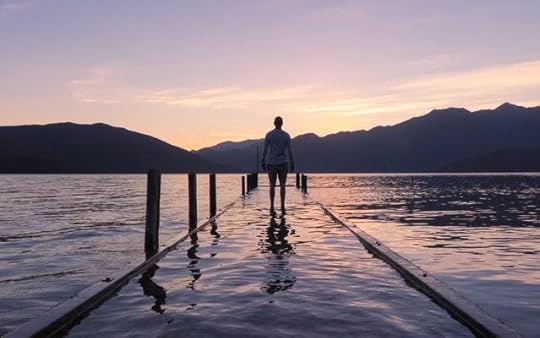
In my last post, I profiled a novelist who took advantage of the lockdown to slow down; giving herself more than enough time and space to inhabit her manuscript revisions. This shift allowed her to tap a “mysterious” source of creativity and finish her work ahead of schedule.
In response, a reader sent me some notes on how he had similarly leveraged the disruption induced by the lockdown to experiment with a deeper, more deliberate lifestyle, despite the fact that he has a typical email-bound knowledge work job and two young kids at home.
Here’s his schedule:
Monday-Friday from 5-7 am: I do my morning routine (push-ups, sit ups, squats, meditation, and reading The Daily Stoic prompt for that day). This takes about 30 minutes, depending on how slow I’m moving that morning.
Following that I spend at least an hour and a half of writing the novel I’m working on.
Then an hour of tasks/admin for my day job.
At 9am, I take over child care while my wife works her job. We have lunch and nap time. I’m back to my day job processing various tasks/admin from about 1-5pm.
I only check email three times a day (personal and work) and I have those times set on my Google Calendar which enforces a limit for dealing with those emails to a half hour per session.
When I’m done with my afternoon tasks, this is when I’m available for phone calls and meetings. (I treat this like office hours.)
I shutdown work around 4:30-5pm.
Social media is blocked during my work hours. There’s no social media or email apps on my phone.
There’s a vague uneasiness that comes from a life overfilled with busyness and distraction. We crave something deeper, in which we spend more time on things that matter and are more ruthlessly efficient about the things that don’t.
But change is hard, and it’s easier in the moment to mindlessly scroll the iPad, or play email ping-pong, wondering, in true Office Space style, what it is that you really do here.
Most of what’s going in our current moment is terrible. But there is a sliver of light among the darkness: sometimes hard changes require a hard disruption.
More on this to follow…
May 6, 2020
On Doing Less to Produce More: A Novelist Embraces a Minimalist Lockdown

I recently received an email from a writer in New York City who sold her debut novel right before the coronavirus lockdown. She had until mid-April to finish her first round of revisions. In an effort to make the process more “fun and fluid and intuitive,” and feature less of the stressful long hours she had experienced working on the first draft, she deployed the following routine:
Around 10pm, I put my phone on a shelf in my living room.
After waking up naturally the next morning, I would eat breakfast and then go to my desk and work on my revision.
At first, it was for around 1 hour. Later, I worked until lunchtime. I always stopped while I still wanted to keep going, so that I would be excited to return to it again the next day.
I only looked at my phone and emails after lunch.
I mostly stopped using social media.
I really cared about resting.
She was convinced that this minimalist approach — a process personification of my exhortation to “do less, do better” — would prove inferior to a more familiar, frenetic work style. She began planning out in her head how she would ask for an extension.
“But then an interesting thing happened,” she told me. “Solutions to my manuscript problems started coming to me as I was falling asleep, waking up, or taking a shower. I would jot them down in a notebook, then try to implement them during the 1-3 hours in the morning. They worked out perfectly every time.”
She ended up handing in her revisions early.
“I felt like I unlocked something so valuable in my creative process, something that still feels mysterious to me.”
Obviously, this specific schedule is not something that most of us can replicate at the moment (especially those of us with school-aged kids stuck at home). But there’s a more important broader point lurking here that extends beyond our current disruptions. The human mind craves deep, difficult challenges, and can find real satisfaction in the process of sticking with something intricate but important for a long period of time.
And yet we’ve created a world in both our professional and personal lives where such long-form thinking is nearly impossible.
Email. Zoom. Social Media. Texting. Back to Social Media. Email. Zoom. All of this creates a sugar-rush sense of busyness. But when’s the last time you felt that “mysterious” sensation of the pieces of something deep finally starting to click into place. This requires a certain minimalist head space that’s becoming increasingly rare.
April 30, 2020
The Chaotic Factory

Imagine that you walk into a car factory and encounter a chaotic scene.
Half-built vehicles are scattered across the floor. Workers wander frenetically, grabbing each other as they pass, shouting out random requests.
“Do you know where the wrenches are?”
“When you get a chance, come show me how to install a steering wheel.”
“What happened to those lug nuts I gave you yesterday, did you use those?”
Some of the workers strain under the weight of materials piled high in their arms. Others lounge in the corner.
Vague but emphatic posters on the wall encourage everyone to “hustle” and the shop managers stand on ladders yelling out slogans, trying to inspire intrinsic motivation.
If you saw this, you’d be astounded. Surely this factory wouldn’t be in business for long. The company down the street that knows about computer-controlled assembly lines and Kaizen and inventory supply chain logistics will eat it for lunch.
And yet, in knowledge work, a lot of organizations run more or less like the chaotic car factory. If you replace the half-built cars with shared Google Docs, and the shouted requests with emails and Zoom, it’s the same haphazard dynamics.
Which leads to the interesting question underlying our current state of disrupted affairs: how long until the “smarter company down the street” — with its more disciplined, thoughtful, demanding processes — becomes a reality in the knowledge sector, forcing rapid change in how we work?
April 28, 2020
Building a WWII Bunker in an Office Building

A reader recently sent me another entertaining example of the deep life in action.
He runs a design firm with an office in a warehouse-style building that included a cool feature: a “patio,” cantilevered high above the main floor, where he could relax or chat with coworkers.
“While visually very compelling this was a disaster,” he explained. “I basically had thin glass separating [it] from a warehouse where lots of people used, ate lunch, etc…a space with absolutely no functional use.”
Then last summer, on a visit to London, he toured the Churchill War Rooms, a warren of bomb-proof underground bunkers where Winston Churchill and his war cabinet plotted out the Second World War (see above photo). It resonated.
“I was blown away by how focused Churchill and the British leadership was, in these dark, small, and smoky rooms running World War II,” the reader told me.
On his return, he remodeled the office patio into a closed off space inspired by the War Rooms. Here’s an exterior view:

The room has no windows and (crucially) no computers. The walls are covered in whiteboards and the lights are in an early 20th century style:
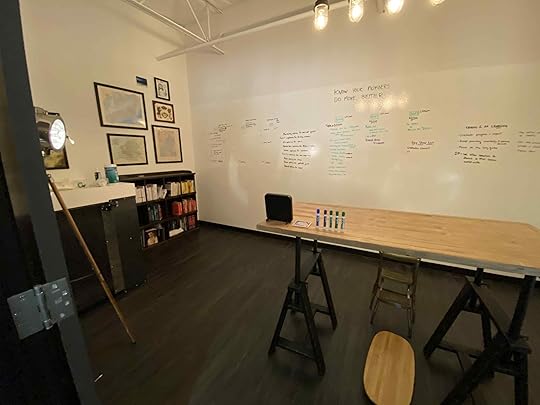
To honor its source of inspiration, some framed World War II maps adorn the wall:
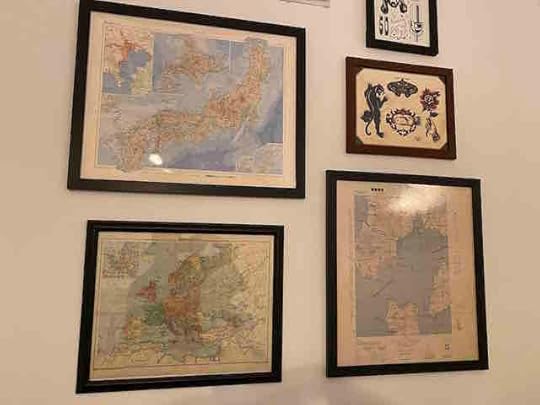
“I use my [regular] office to do all my managerial, email, and meeting work (lots of Zooms!),” he explained. “Then I move to my War Room for creation, focus, music, and deep work!”
For those who embrace the deep life, form and function become intertwined, while moderation is minimized.
#####
A brief note: I really enjoy hearing these stories of finding solace in depth during hard times — both in professional and personal contexts. If you have a similar tale to share, I’d love to hear it at author@calnewport.com. (Accompanying photos are welcome when relevant.)


April 24, 2020
Bring Back Blogs?

My latest article for WIRED offers a suggestion about improving our information response to the current pandemic.
In the piece I acknowledge that Twitter’s algorithms, in particular, have actually been pretty useful in helping to surface otherwise obscure experts who are suddenly intensely relevant to the moment (I document, for example, how virologist Trevor Bedford jumped from 10,000 to 200,000 followers since February).
But convoluted Tweet threads and thumbnail screenshots of longer articles are a poor way for these experts to explore evolving, complicated ideas.
My solution:
“We need to augment social platforms with a surge in capacity of the original Web 2.0 technology that these upstarts so effectively displaced: blogs. We need WordPress-style sites featuring both easy-to-update static pages and chronological posts. These sites could be hosted by institutions with some degree of public trust and a reasonable technology infrastructure, such as universities, medical centers, and think tanks. Some mild gatekeeping could be performed on the experts granted blogs by these institutions, and critically, IT support could be provided so that the experts could start publishing with minimal overhead.”
I’m not sure if this particular idea will take hold or not. I do believe, however, that we need innovative thinking not just about medical treatments, but also about how we handle the deployment of information relevant to our response.
You can read more here.


April 23, 2020
Building a Deep Work Cabin…in an Apartment
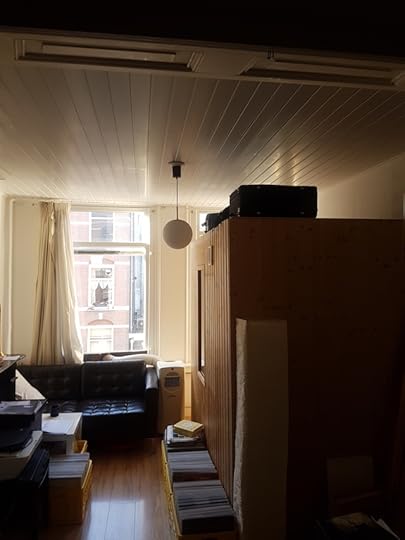
I recently received an attention-catching email from a 29-year-old professional trumpet player. He told me that during his first year studying at a well-known music conservatory his girlfriend convinced him to join Facebook. “Somehow I had a feeling that the whole thing robs me from practicing the trumpet and getting things done,” he said.
So between 2013 and 2015, he took a two-year break to focus on his training, and ended up writing a Master’s Thesis and graduating with a very high grade point average. “These results are directly linked to abandoning social media,” he explained.
In 2015, he rejoined Facebook, pressured by the idea that professional musicians must promote themselves online to get ahead. “It did more harm,” he wrote, “sucking me back into compulsive clicking and wasting time.”
After coming across Deep Work and (later) Digital Minimalism, he decided to leave social media for good and prioritize focused work on a small number of important pursuits. “To take back control and stay true to my own nature,” he summarized.
The decision paid off. He recorded four albums in four years, and more recently, in just two months, made it 30 chapters into a textbook he’s writing on trumpet methods.
Then came our current disruption.
“The strange thing is,” he told me, “I don’t feel negative.” As he elaborated:
“Instead of feeling sad and restricted, I have build a wooden cabin in my living room. (I used to practice for hours in this cabin as a teenager). The cabin was in storage for ten years…but now during the pandemic I finally found the courage to make the decision to build it once again [in my apartment!]. It is my own “Distraction Free Zone” or I also call it: ‘The Deep Work Cabin,’ ‘Unwired’ or ‘Trumpet Laboratory.”
Here’s a view of the interior:
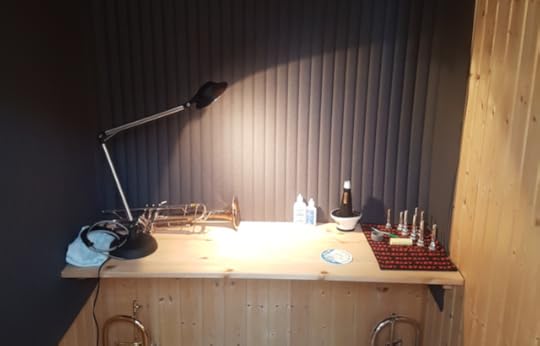
This is not only a good case study of digital minimalism in action, but it points to a broader point that’s intensely relevant at the moment. A deep life, in addition to being satisfying, is also resilient.
####
A brief note: I really enjoy hearing these stories of finding solace in depth during hard times. If you have a similar tale, I’d love to hear it at author@calnewport.com. (Accompanying photos are welcome when relevant.)


April 20, 2020
More on Cultivating a Deep Life: Mindset

In yesterday’s post, I discussed an approach for systematically increasing the depth in your life. It involved creating a monthly plan that identifies specific behaviors designed to amplify things that matter and reduce the things that distract you from these values.
Today, I want to add a caveat. In my many years experimenting (often publicly) with the elements of the deep life, I’ve come to accept that the right mindset is just as important as the right plan.
You can have a well-designed checklist of meaningful activities you’re trying to integrate into your routine, but if your background hum of activity is still oscillating wildly between frenetic stress and numbing distraction, your life is anything but deep. You need instead to see your entire day differently.
This mindset is well-summarized by the advice I’ve been giving off and on since the early days of this blog:
Do less.
Do better.
Know why.
Let’s elaborate the elements of this self-improvement catechism one by one:
To “do less” is to slow down. Focus on one activity at a time. Do less total activities. Be willing to pass through occasional interludes of full non-productivity. Who first comes to mind when you ponder meaningful living? If you’re like most people, it’s probably someone who, in the spirit of Thoreau, approaches life deliberately, doing a small number of things, but each with full focus (often somewhere scenic).
To “do better” is to direct your focused energy toward quality activities, when possible. Given the same scraps of weekend free time, you could either painfully coax a garden irrigation system into efficient operation (see above), or you could binge Netflix. In their book All Things Shining, philosophers Hubert Dreyfus and Sean Dorrance Kelly note that the appreciation of quality — especially once refined — can provide a source if sacredness in an otherwise de-romanticized world.
Finally, to “know why” is to get at the very core of the deep life mindset. Working backwards from your values to determine your activities creates a lifestyle dramatically more meaningful than working forward from whatever seems appealing in the moment. It’s the difference between resilience and anxiety; satisfaction and distraction. As I argue in Digital Minimalism, the fight to “know why” has been made harder in recent years due to the engineered compulsion of the attention economy. But, in a way I never could have imagined when I was writing that book, we now find ourselves in a circumstance where the shallowness of these diversions is being made unmistakably clear as our hunger for something greater increasingly gnaws.
The deep life is not an ambitious one-shot goal, like completing a marathon, that you work hard at until you one day obtain it all at once. It’s a state of being with which you become increasingly comfortable. A process that starts with your mind.
April 19, 2020
Cultivating a Deep Life
Craft
Community
Contemplation
Constitution
Amplify
Learn AirTable; produce application for inventory system.
Volunteer for local Meal on Wheels chapter.
Observe Shabbat.
Eat clean; 10,000 steps a day.
Reduce
Using meeting scheduling software to control ratio between deep and shallow work.
Take Instagram off of your phone; prune down accounts you follow to people you really care about or inspire you.
Eliminate negative tweeting.
Alcohol only on weekends.
I’ve been writing off and on recently about the notion of the deep life, in which you focus with energetic intention on things that really matter, and avoid wasting too much attention on things that don’t.
We find ourselves now in a moment when many people are beginning to question the suboptimal aspects of their life that they had previously been tolerating through some combination of momentum and convenience. It is, in other words, a good time to explore various strategies for injecting more resilience and meaning into your existence.
With this in mind, I’ve been thinking about ways to evolve towards a deeper life. One observation that rings true from my experience is that you should resist the urge to try to build a master plan that, once implemented, will transform everything for the better in one dramatic moment. This optimism is quixotic. It’s much more realistic to experiment with smaller shifts, one after another, to discover what sticks and what ends up superfluous.
My recommendation is to think in increments of roughly one month. For a given 30-day period, attempt a limited number of changes to the four components of the deep life (craft, community, constitution, and contemplation). Focus on these changes and see what works and what doesn’t. Keep the former in place and abandon the latter. If you repeat this long enough you’ll notice a marked shift toward the deeper end of the spectrum.
To be more concrete, consider focusing on two things for each component of your life that you’re trying to improve:
A high-impact habit that will significantly amplify the value you’re deriving from this component.
A commitment for reducing sources of distraction or unnecessary effort diverting your attention within this component.
At the top of this post is an example table showing what a deep life plan of this type might look like for a hypothetical individual. The details here matter less than the general strategy: month after month, relentlessly look to amplify habits that matter while reducing behaviors that don’t. Stick with this approach long enough and the qualitative experience of your life will be significantly improved. You can’t control what happens to you — is there any period in recent history in which this axiom has been made more clear? — but you can control how you respond, and ultimately, this is what makes all the difference.
Cal Newport's Blog
- Cal Newport's profile
- 9944 followers



